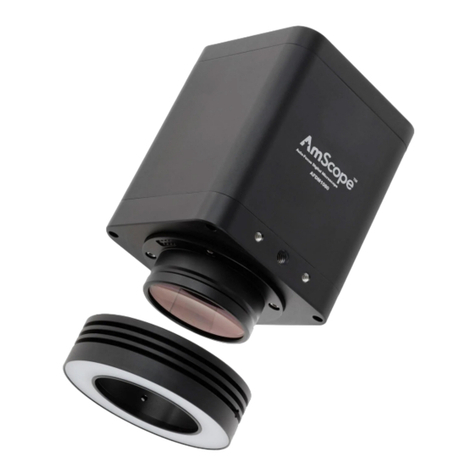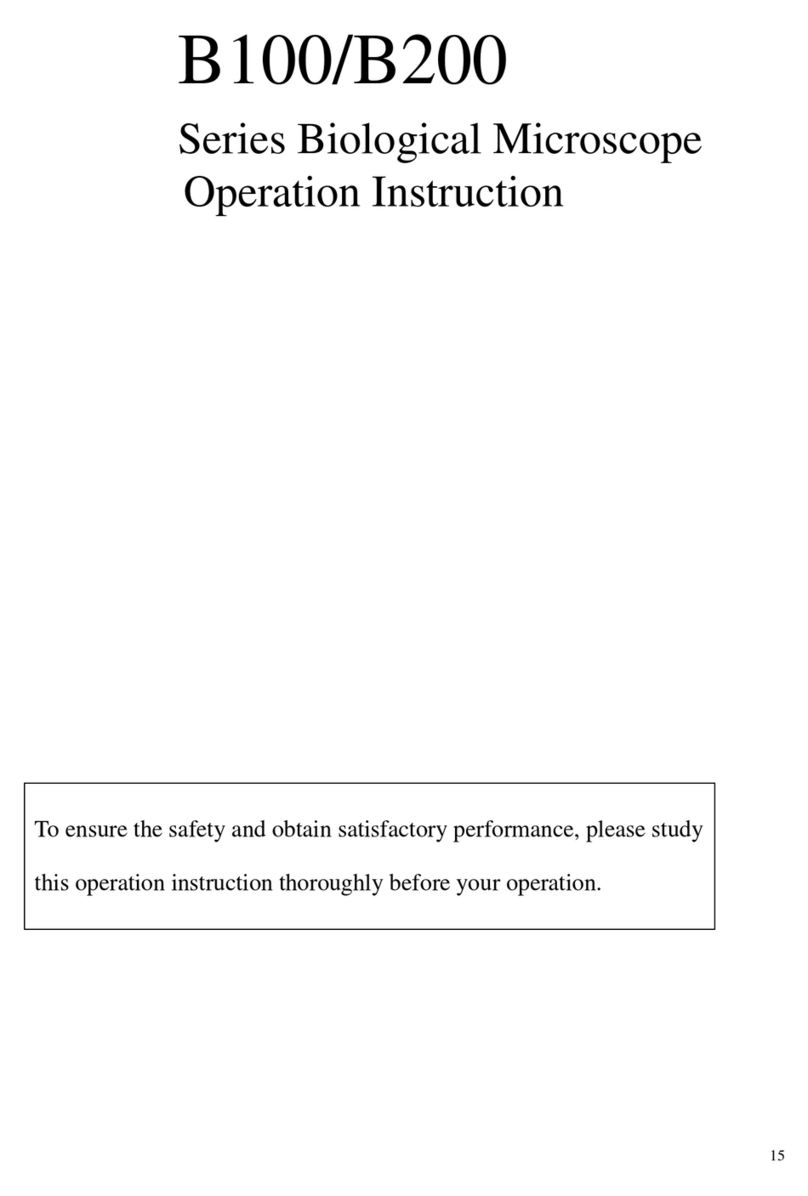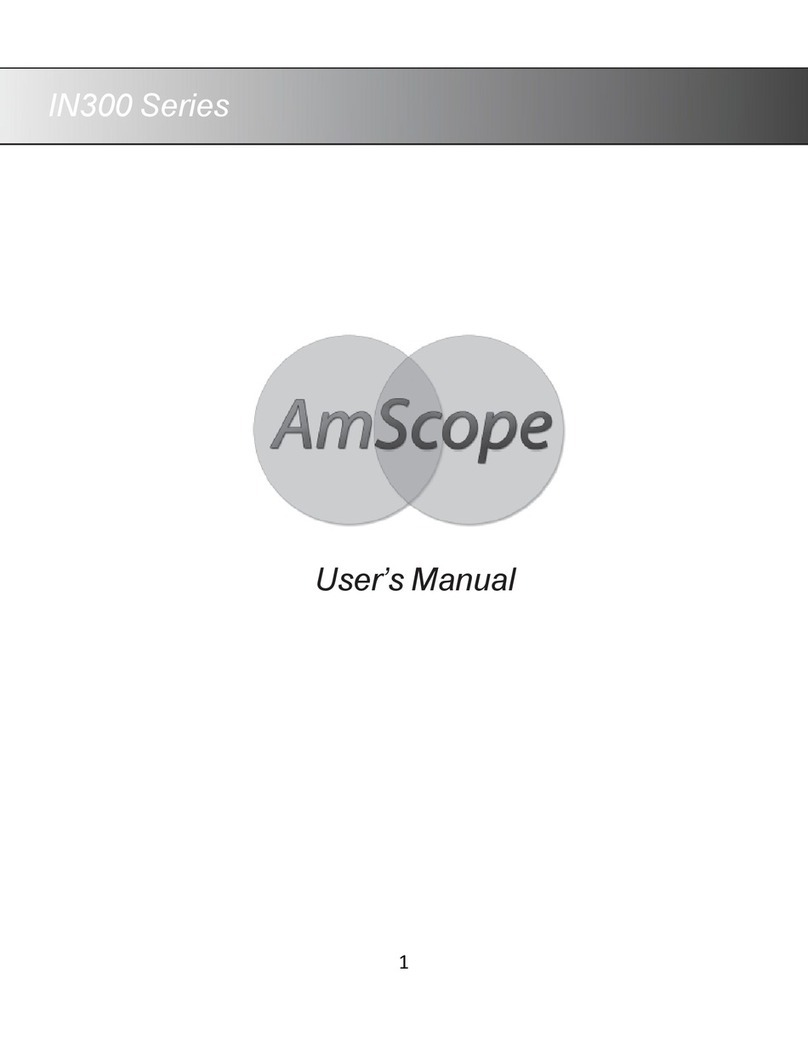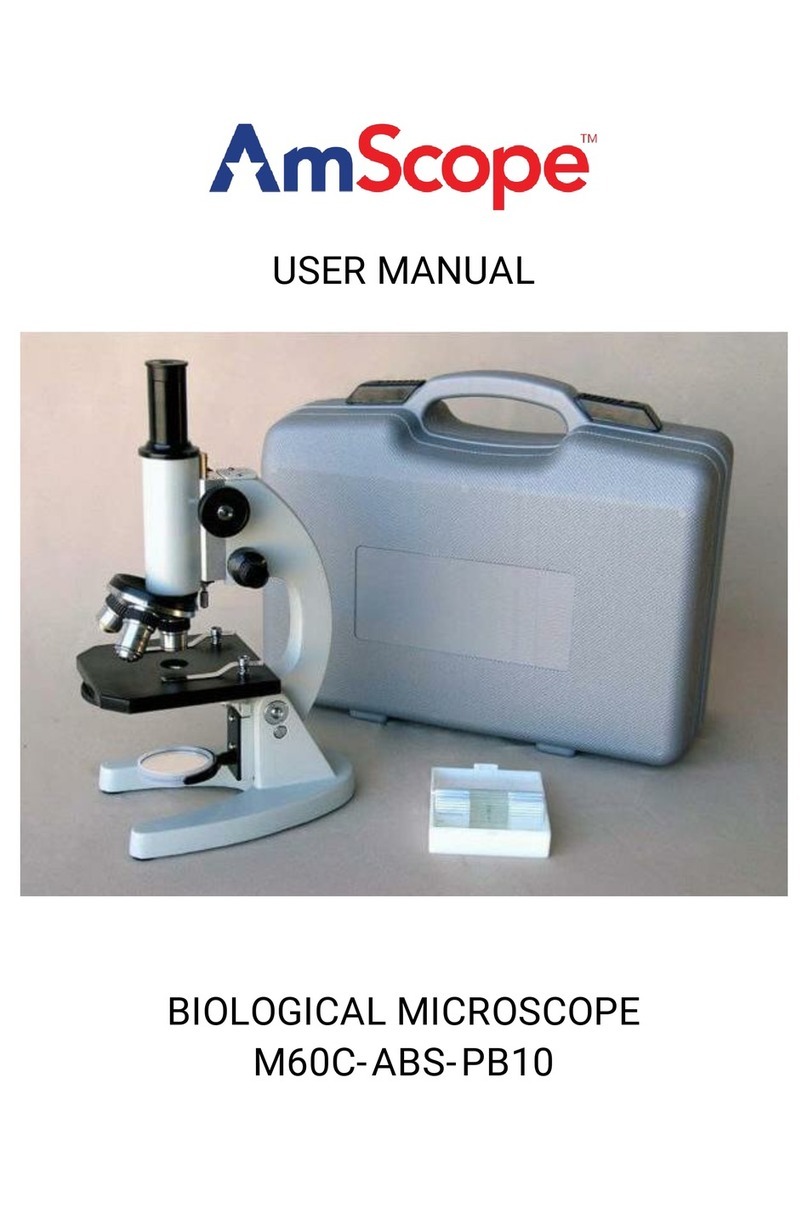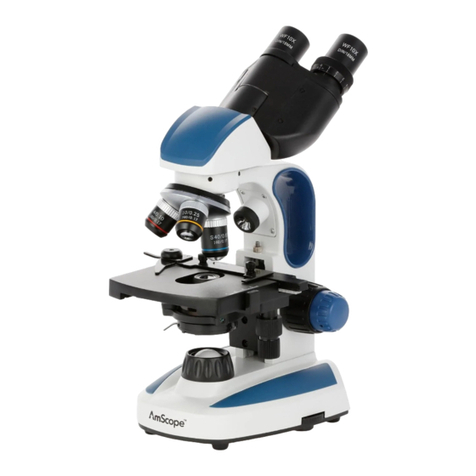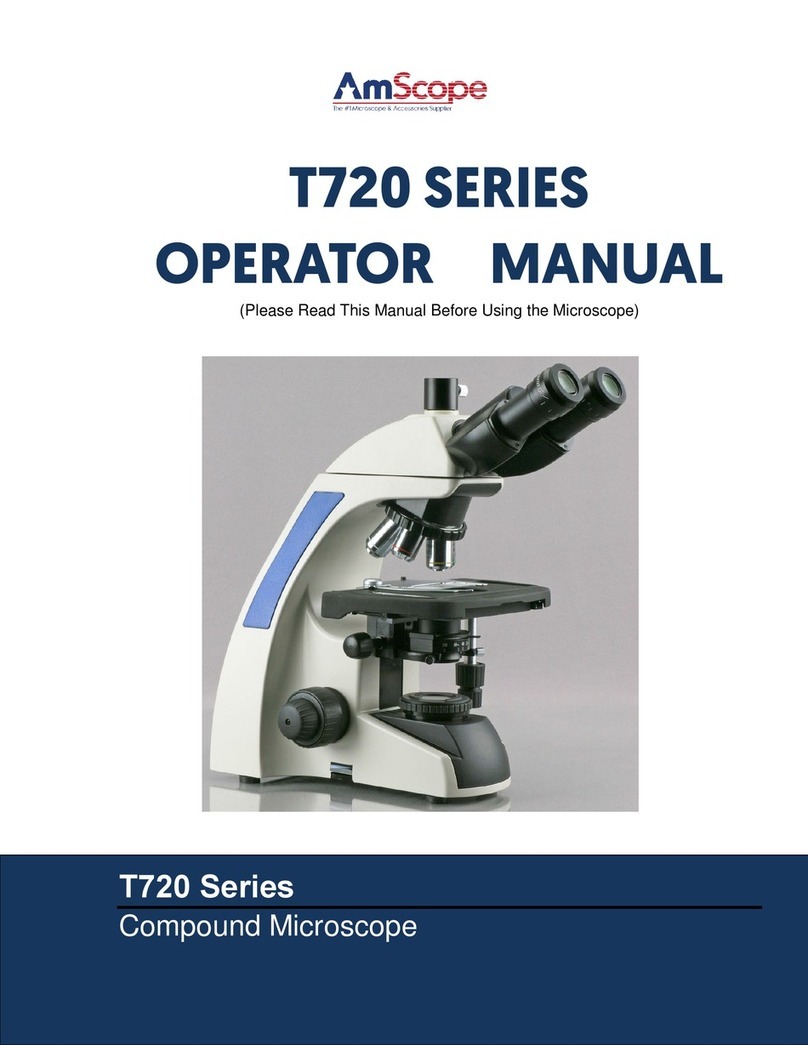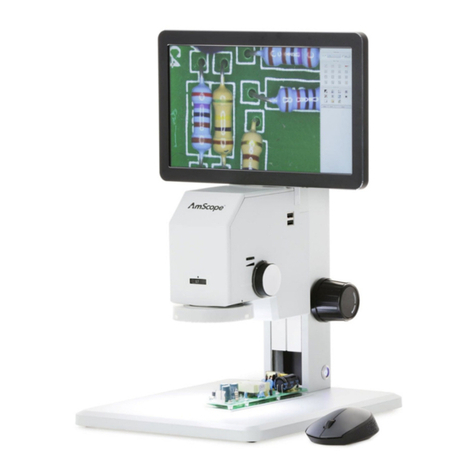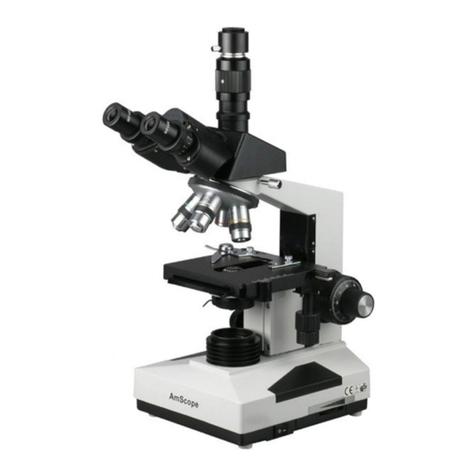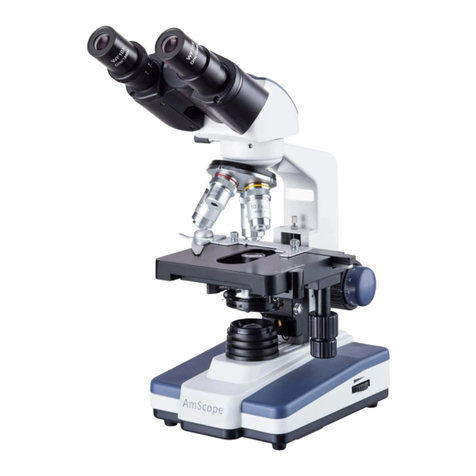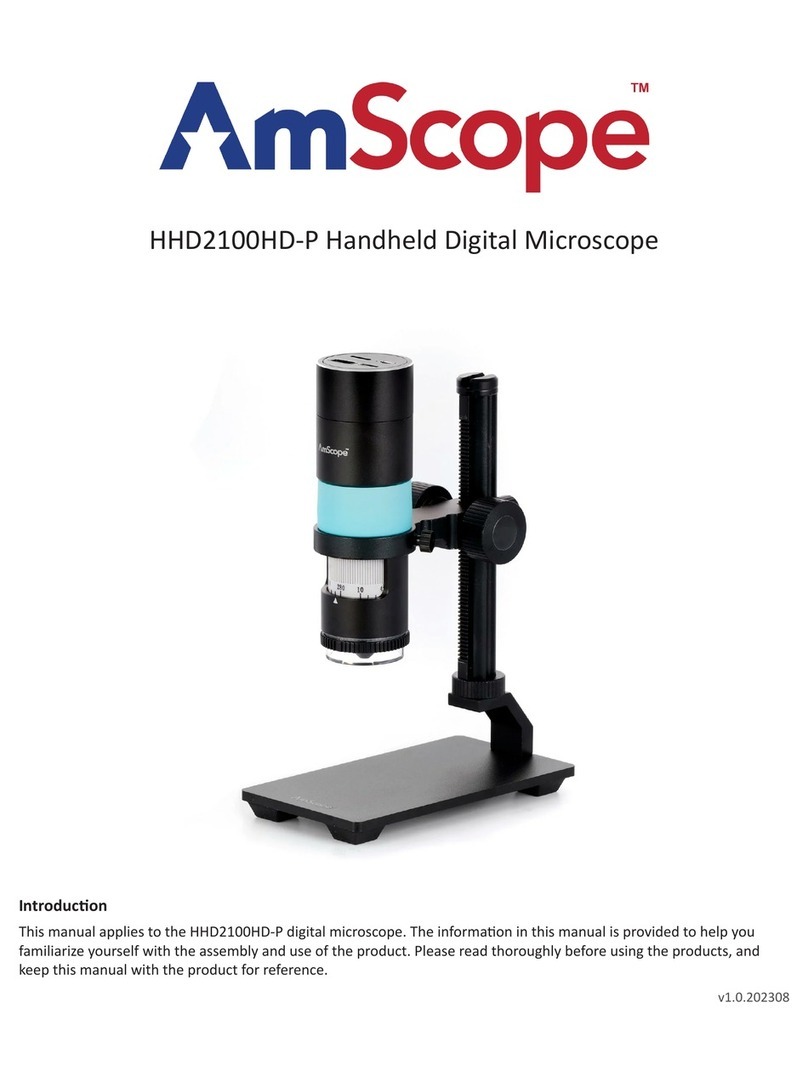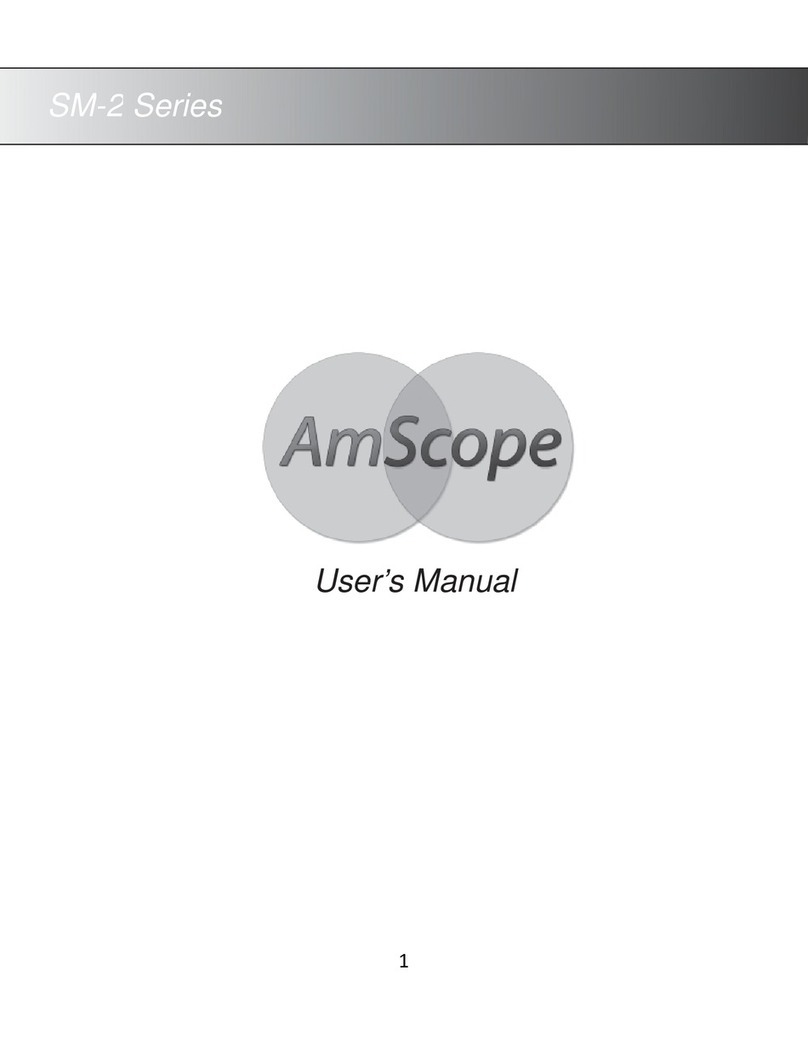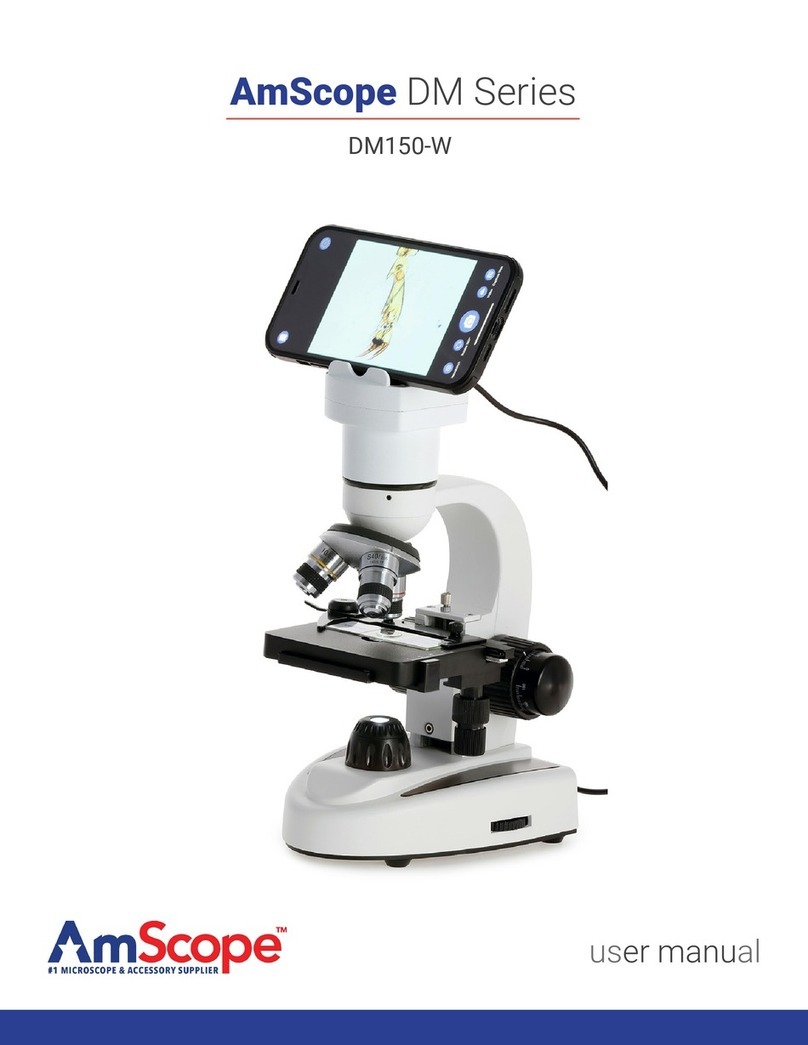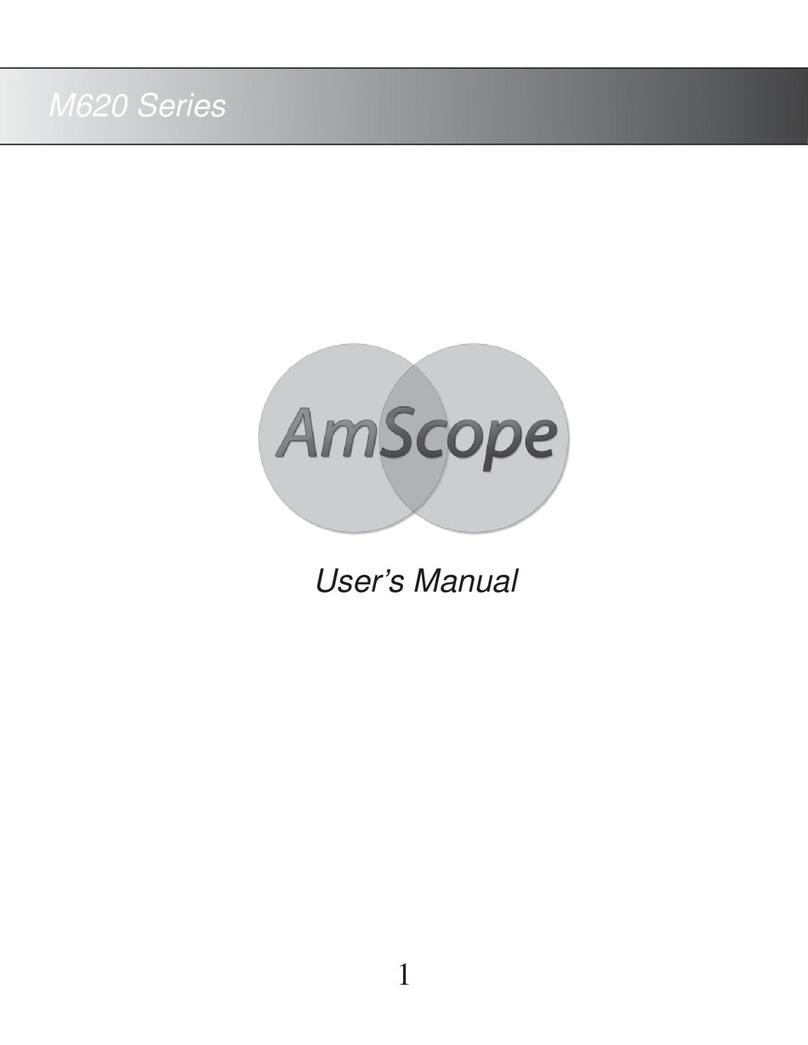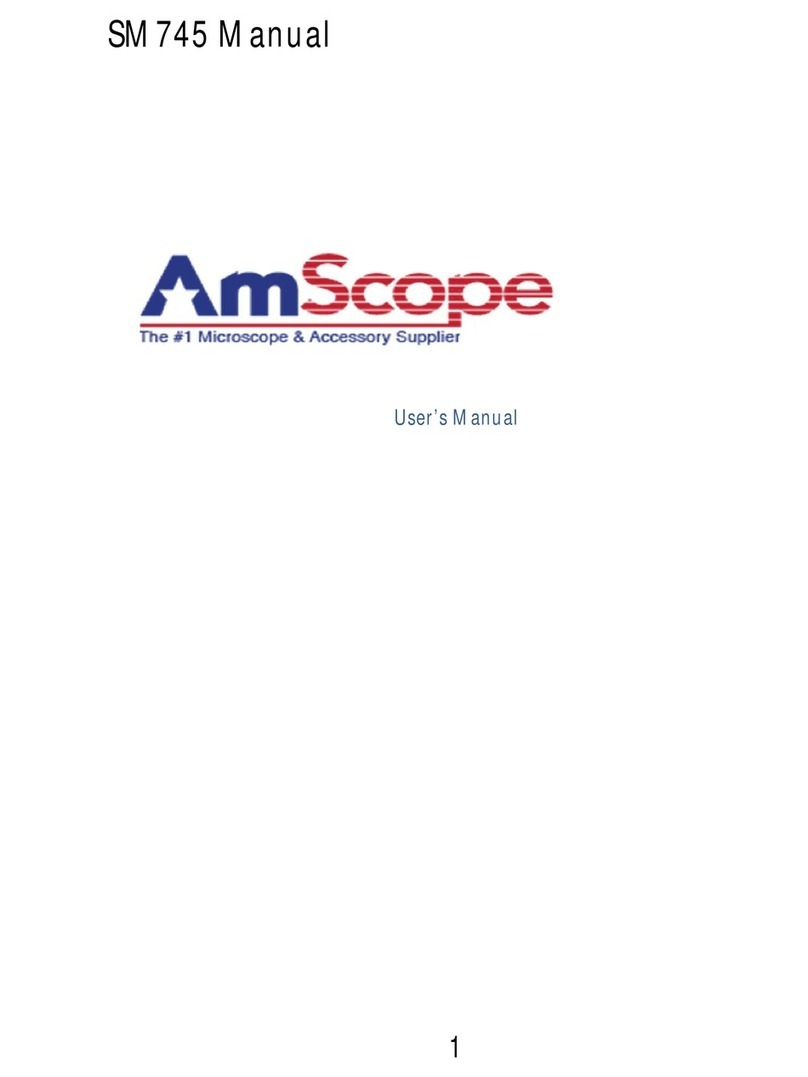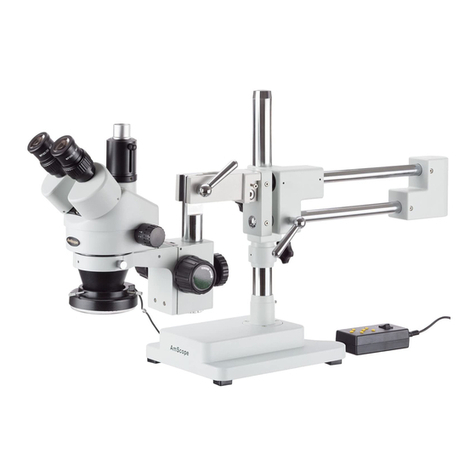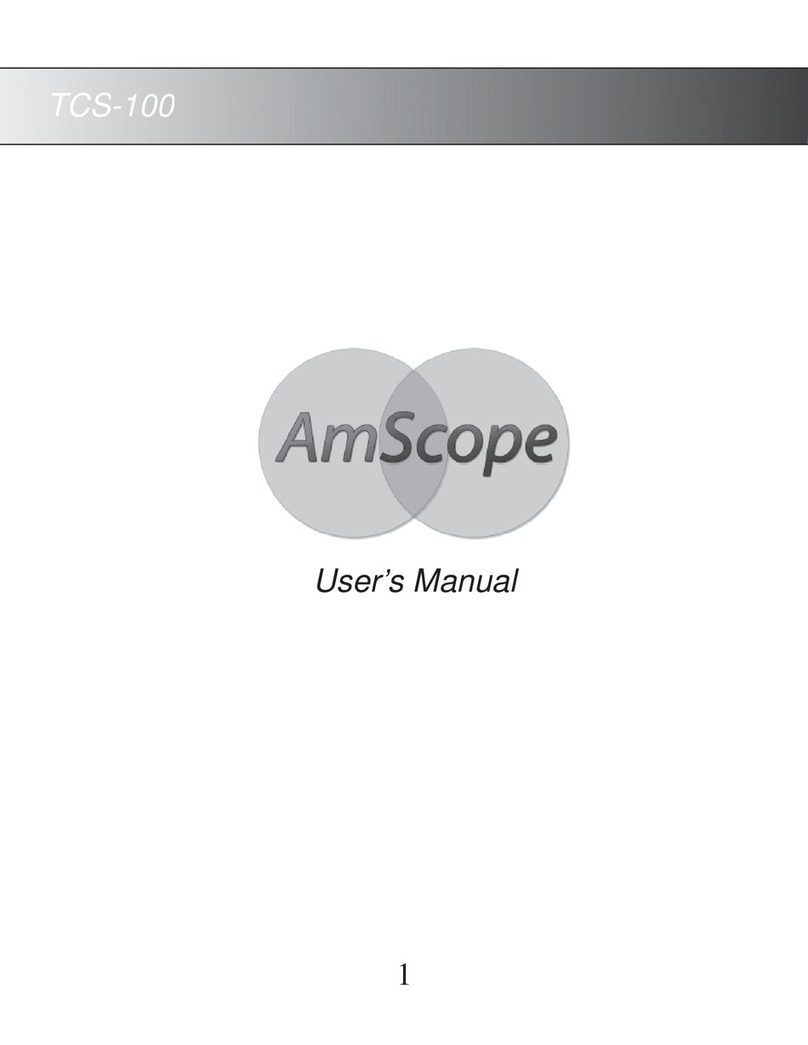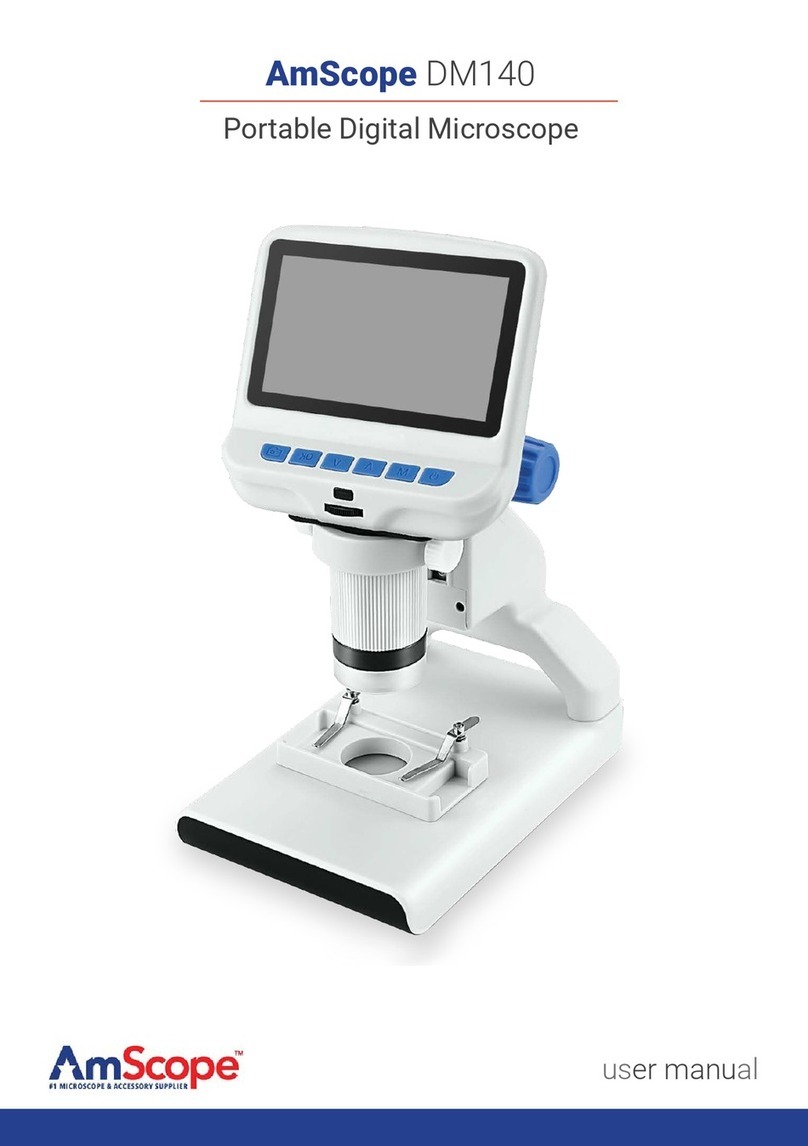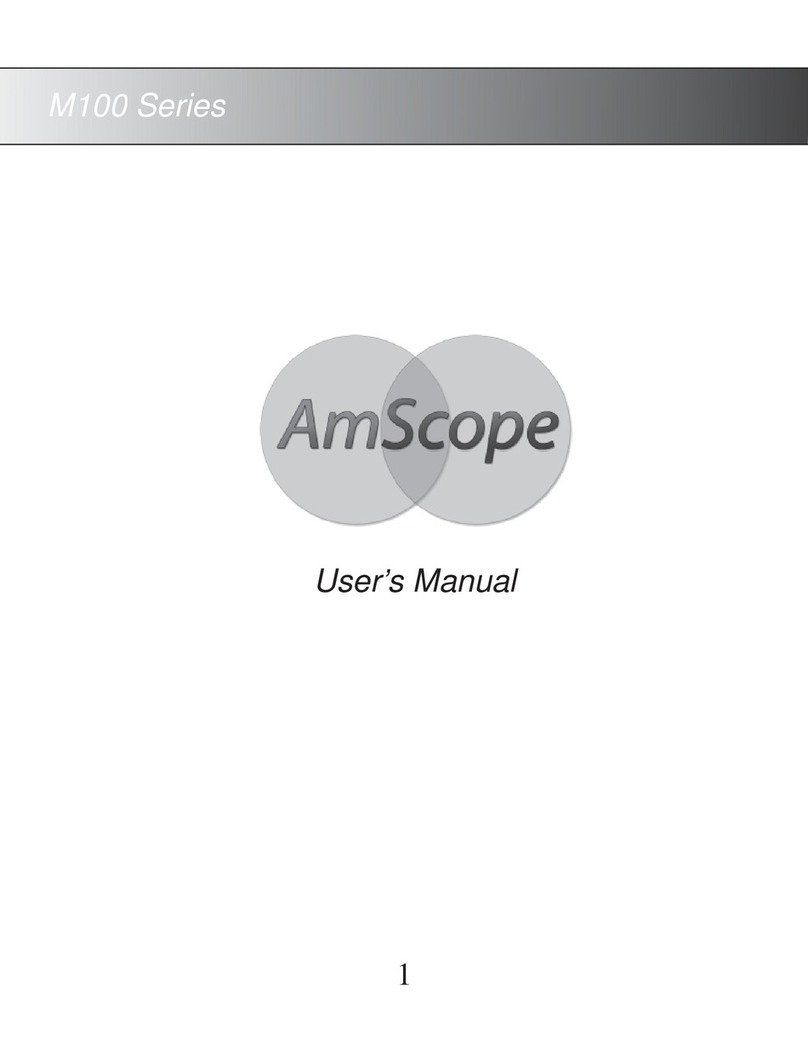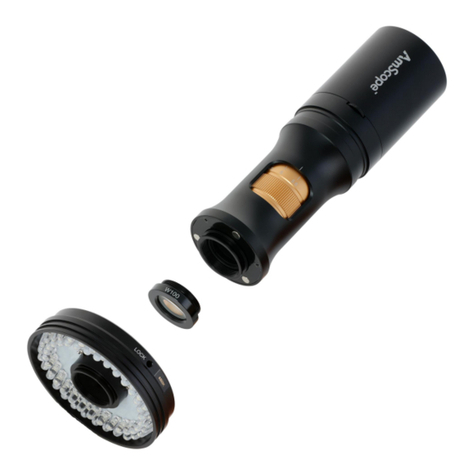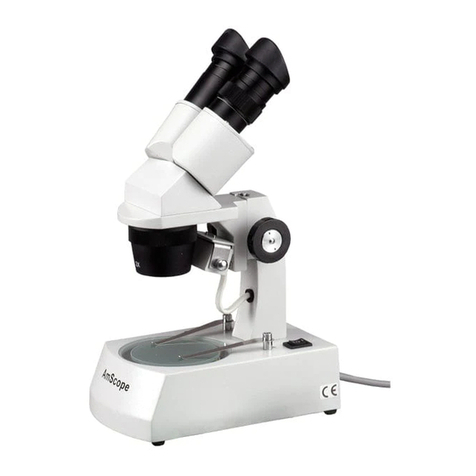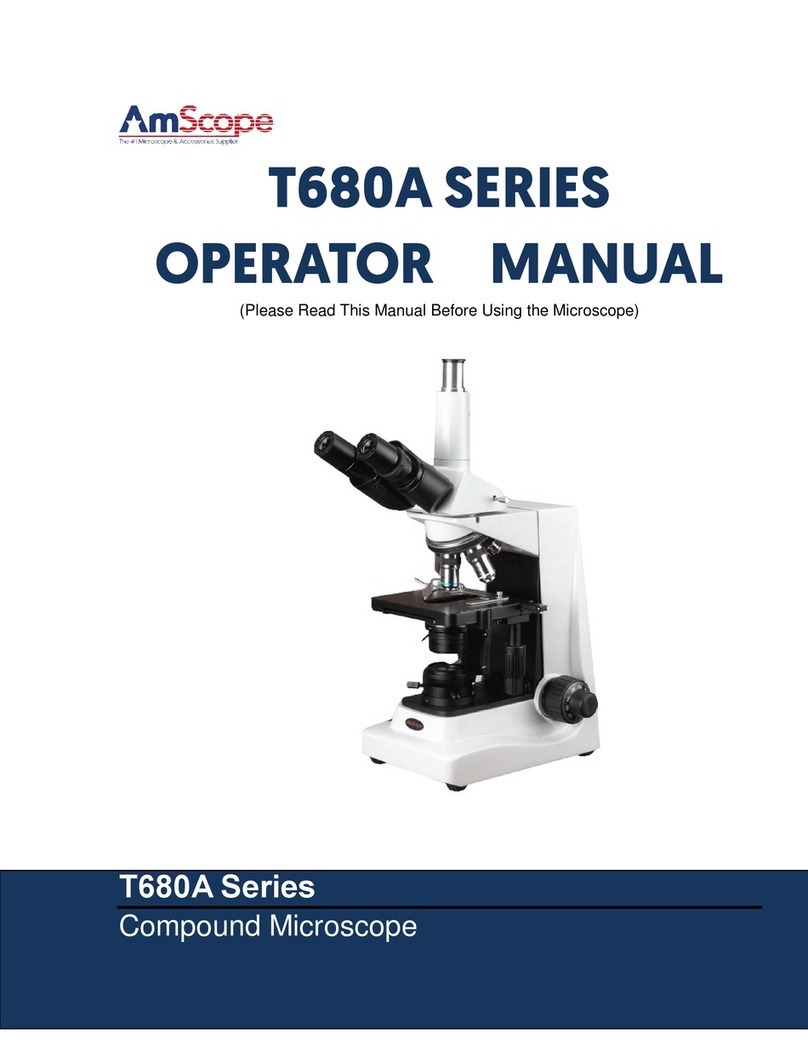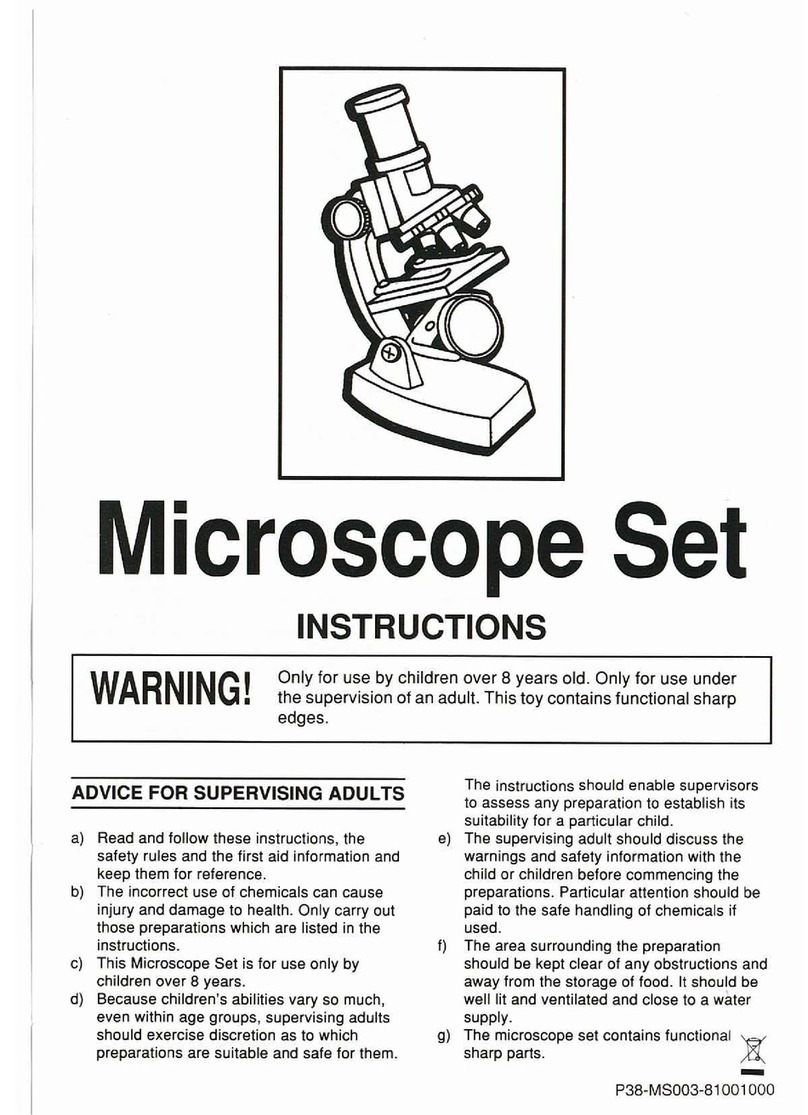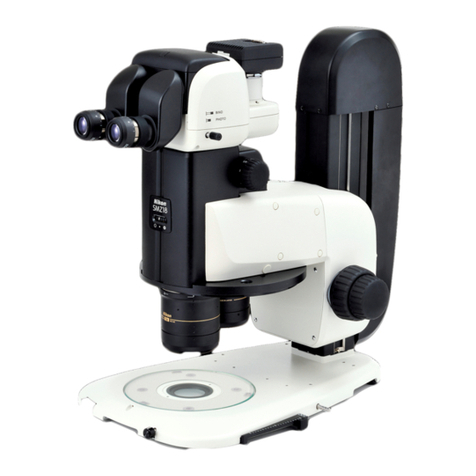
Microscope Features
• Focus Knob: moves the specimen up or down making the image clear and
sharp. Use the focus knob to raise or lower the lens until the image you see is
clear and sharp.
• The Body Tube: Connected to the eyepiece and helps focus the lenses.
• Eyepieces: The two eyepieces have 8X and 20X magnications. Remove the
dust cover from the eyepiece and put it aside in a safe place.
• Power Indicator/ Objective turret: The turret has 3 lenses or objectives: 15 X,
30 X, and 60 X (See Fig. 3.1). The shorter the objective, the lower the power
or magnication. The longest objective is the highest power. To calculate the
magnication you are using, multiply the value of the objective by the power of
the eyepiece (Note that the power indicator on the turret makes this calculation
for you). For example, turn the power indicator to the longest objective (60 X
and multiply it by the power of your xed eyepiece (20X).
• The Stage: A at platform with a hole in the center allows reected light off the
mirror or light source to enter the microscope.
• Stage Clips: The 2 stage clips hold the glass slide rmly on the stage.
• Mirror/Light Source: While holding the base down, pull on the arm to tip the
microscope back. Examine the mirror and light source located below the stage
to see how you can adjust them, and choose one or the other. The light source
turns on automatically when tipped upwards toward the stage. The mirror
gathers and reects light into the microscope.
• Base/Battery Compartment: The battery compartment is located inside the
mirror/light source. Slightly ex the C-clamp arm connected to the microscope
to remove the mirror/light source from the microscope. Using a Philips head
screwdriver (not included), remove the battery door. Slide the battery sleeve
out of the compartment. Insert the included coin cell battery with the positive
(+) pole facing the sleeve. Slide the battery and sleeve into the battery
compartment until it makes contact with the battery leads. Test the battery
installation by pressing the on/off button on the side of the mirror/light source.
Replace the battery door and tighten the screw. Reinstall the mirror/light source
into the c-clamp located on the microscope.
4
EYEPIECE |OBJECTIVE LENS 8X 20X
15x 120x 300x
30x 240x 600x
60x 480x 1200x
Available Magnication Options
